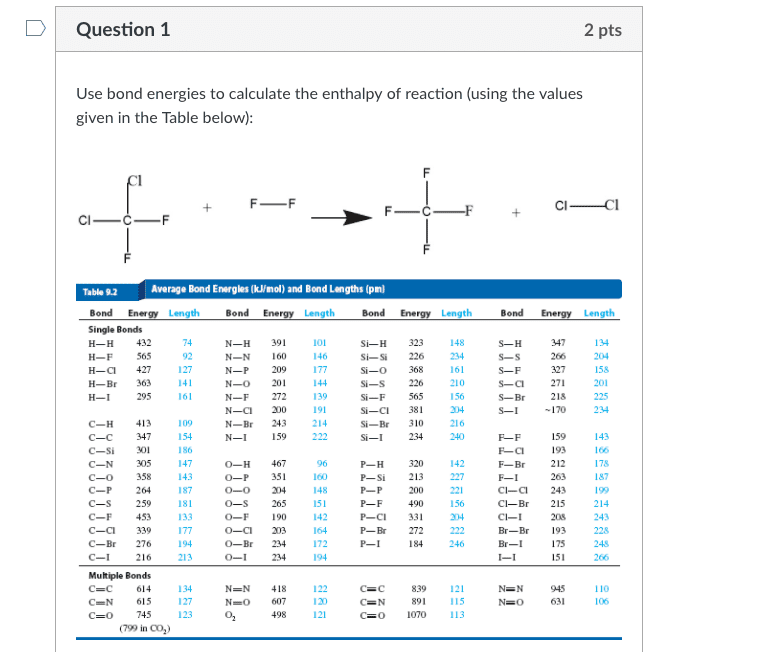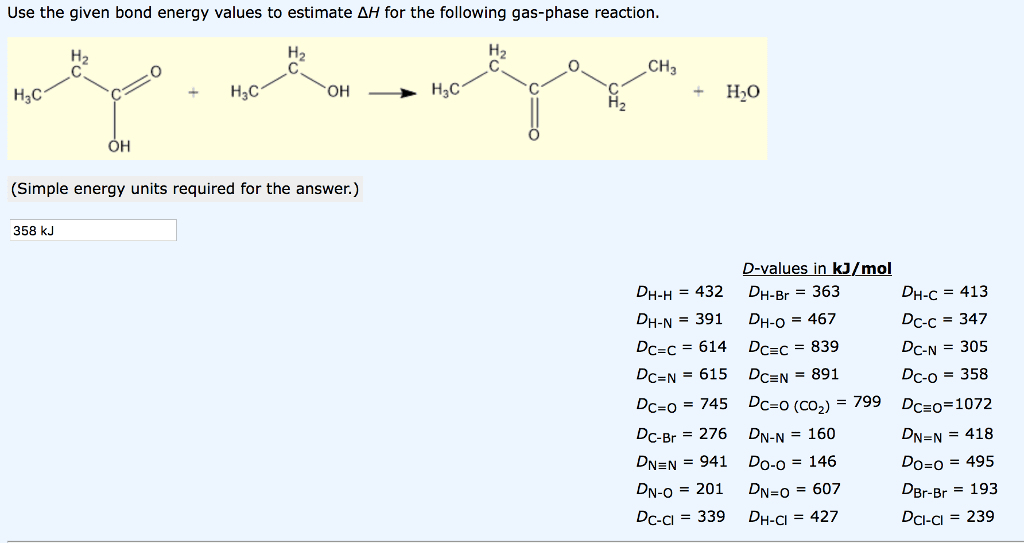CHEM 102 Lecture Notes - Lecture 15: Asteroid Family, Caesium Iodide, Umber
Document Summary
The bond energy of a chemical bond is the energy required to break one mole of the bond in the gas phase. The formation of a bond is an exothermic process. The breaking of a bond is an endothermic process. The same amount of energy absorbed to break the bond is released when the bond forms. The average bond energy for a chemical bond can be calculated using the average of the bond energies for that bond in a large number of compounds. These energies are dependent on the kind of atoms involved in the bond as well as the type of bond, i. e. single, double or triple. In general, for a given pair of atoms, triple bonds are stronger than double bonds, which in turn are stronger than single bonds. The average bond length represents the average length of a bond between two particular atoms in a large number of compounds.



